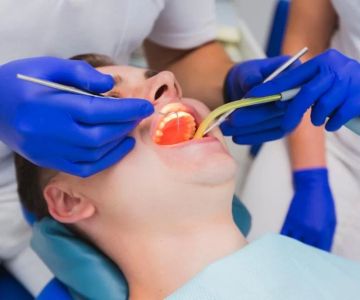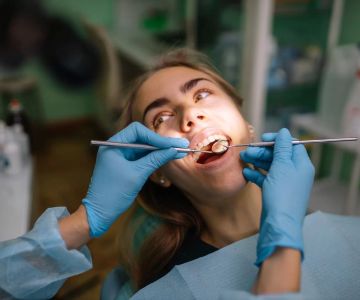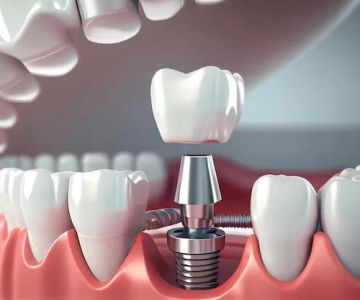Effective Treatment Options for Severe Bite Misalignment
- Understanding Severe Bite Misalignment
- Common Causes of Bite Misalignment
- Treatment Options for Severe Bite Misalignment
- Alternative Treatment Options for Bite Misalignment
- How to Choose the Right Treatment for Your Bite
- Benefits of Early Treatment for Bite Misalignment
Understanding Severe Bite Misalignment
Severe bite misalignment, also known as malocclusion, occurs when the teeth do not align properly. This condition can result in difficulties when chewing, speaking, or even breathing, and may lead to more severe dental issues if left untreated. The severity of bite misalignment varies, and it's crucial to identify it early to avoid complications. If you’re experiencing discomfort or notice that your teeth don’t line up, seeking treatment is essential to improve both your oral health and quality of life.
Common Causes of Bite Misalignment
Bite misalignment can arise due to several factors, including genetic predisposition, childhood habits, and even trauma. Genetics play a significant role in determining jaw structure, which can contribute to conditions like overbite or underbite. Habits such as thumb sucking or prolonged use of a pacifier during early childhood can affect how the teeth and jaw develop. Additionally, injuries or accidents that impact the jaw or teeth can cause misalignment.
Treatment Options for Severe Bite Misalignment
When it comes to treating severe bite misalignment, there are several proven options. One of the most common and effective treatments is braces. Traditional metal braces are a staple in orthodontics and are often used to correct significant bite issues. Braces work by applying consistent pressure to the teeth, gradually shifting them into their proper positions.
For those looking for a less visible alternative, clear aligners such as Invisalign can be an excellent choice. These aligners are discreet, removable, and effective for many types of misalignments, making them a popular option among adults and teens alike.
In some cases, more advanced solutions such as jaw surgery might be necessary. This is particularly true for individuals whose bite misalignment is caused by structural issues in the jaw. While jaw surgery is typically a last resort, it offers a permanent and highly effective solution for severe cases.
Alternative Treatment Options for Bite Misalignment
Aside from braces and aligners, there are alternative treatment methods that may be recommended based on the severity of your condition. For mild to moderate misalignment, dental appliances like retainers or bite plates might be used to help shift the teeth gradually. These treatments are often employed as follow-up care after more extensive orthodontic work.
Another alternative is orthodontic headgear, which is typically used for children whose jaws are still developing. This device helps guide the growth of the upper or lower jaw and can significantly impact the alignment of the teeth.
How to Choose the Right Treatment for Your Bite
Choosing the right treatment for severe bite misalignment can be daunting. It's important to consult with a professional orthodontist or dentist who can assess the severity of your misalignment and recommend the best course of action. Factors such as your age, the complexity of your condition, and your personal preferences will play a significant role in determining the appropriate treatment.
Before making a decision, it's essential to ask questions about the pros and cons of each treatment option. For example, while braces may be the most traditional solution, clear aligners offer a more aesthetic choice. Your orthodontist will guide you through the options to ensure you select the treatment that aligns with both your lifestyle and dental needs.
Benefits of Early Treatment for Bite Misalignment
Seeking early treatment for severe bite misalignment can significantly improve the results of your dental care. Addressing bite issues early on can prevent more serious complications down the line, such as tooth wear, gum disease, and jaw pain. Moreover, correcting bite misalignment early can lead to enhanced self-confidence as well as a more functional and aesthetically pleasing smile.
In addition to the health benefits, early intervention often leads to faster and less invasive treatments, reducing the overall treatment time and cost. For children, early orthodontic assessments are crucial, as they can help prevent the need for more extensive interventions later in life.
If you’re struggling with bite misalignment, it’s important to explore all your options and consult with a professional. By doing so, you’ll be taking the first step toward achieving a healthier, more aligned bite. To learn more about treatment options or to schedule a consultation, visit Dentistry Toothtruth today.







 Alliance Orthodontics4.0 (23 review)
Alliance Orthodontics4.0 (23 review) Growing Smiles of Voorhees4.0 (2464 review)
Growing Smiles of Voorhees4.0 (2464 review) Dr. David Miller DDS5.0 (1 review)
Dr. David Miller DDS5.0 (1 review) Michael C. Byars, DDS5.0 (67 review)
Michael C. Byars, DDS5.0 (67 review) West Loop Dental Associates4.0 (24 review)
West Loop Dental Associates4.0 (24 review) David A. Goodman, DMD Alan C. Ko, DMD Advanced Cosmetic & Prosthetic Dentistry5.0 (333 review)
David A. Goodman, DMD Alan C. Ko, DMD Advanced Cosmetic & Prosthetic Dentistry5.0 (333 review) The Importance of Oral Health Education During Pregnancy for a Healthy Pregnancy
The Importance of Oral Health Education During Pregnancy for a Healthy Pregnancy Best Tips for Brushing Your Teeth Properly for Healthy Gums: Essential Techniques for Oral Health
Best Tips for Brushing Your Teeth Properly for Healthy Gums: Essential Techniques for Oral Health Why Skipping Dental Checkups Can Lead to Bigger Oral Health Problems
Why Skipping Dental Checkups Can Lead to Bigger Oral Health Problems Advantages of Porcelain Dental Restorations
Advantages of Porcelain Dental Restorations How Can Diabetes Cause Tooth and Gum Problems? Preventing and Managing Oral Health Issues
How Can Diabetes Cause Tooth and Gum Problems? Preventing and Managing Oral Health Issues Healthy Habits for Promoting Good Oral Health and Hygiene: Tips for a Healthy Smile
Healthy Habits for Promoting Good Oral Health and Hygiene: Tips for a Healthy Smile